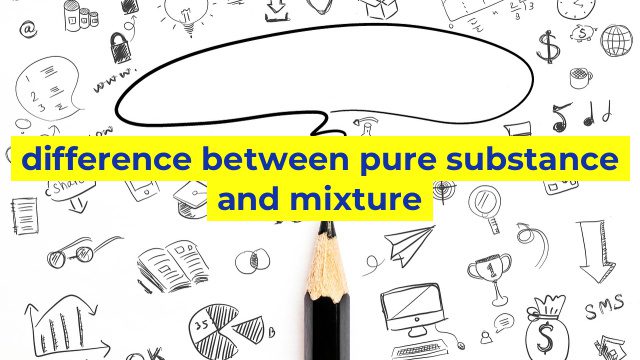The Difference between Pure Substance and Mixture
Introduction:
In the world of chemistry, substances are classified into two categories: Pure Substance and Mixture. Chemistry students come across these terms and concepts as a critical part of their coursework. But what is the difference between these two terms? Let’s explore each one in some detail.
Pure Substance:
A pure substance is a material made of only one kind of particle or molecule, hence it has a unique and consistent set of physical and chemical properties. Pure substances can exist in three states, solid, liquid, or gas.
Examples of pure substances include gold, water, and nitrogen gas. Pure substances can also be divided into two categories: elements and compounds.
Elements are substances that cannot be broken down into simpler substances using any chemical means. Examples of elements include helium, carbon, and oxygen. Compounds, on the other hand, are substances formed by chemically combining two or more different elements. Examples of compounds include water (which is made of hydrogen and oxygen) and sodium chloride (table salt) which is made of sodium and chlorine.
Mixture:
In contrast to pure substances, a mixture is a physical combination of two or more substances in varying proportions. Unlike a pure substance, a mixture does not have a unique set of physical and chemical properties.
Mixtures can be homogeneous or heterogeneous. A homogeneous mixture has a uniform composition throughout, while a heterogeneous mixture has regions of different composition.
Examples of mixtures include air, which is a mixture of nitrogen, oxygen, carbon dioxide, and other gases, and saltwater, which is a mixture of water and salt.
Conclusion:
In summary, Pure substances and mixtures are two important concepts in chemistry. While pure substances are made up of a single substance, mixtures are made up of two or more substances. Pure substances have a unique set of physical and chemical properties, while mixtures do not. Understanding these concepts is essential to understanding the world of chemistry.
Table difference between pure substance and mixture
| Pure Substance | Mixture | |
|---|---|---|
| Definition | A material made up of only one kind of particle or molecule | A combination of two or more different substances that are not chemically combined |
| Composition | Homogeneous – the same throughout; or heterogeneous – containing regions with different properties | Heterogeneous – contains visibly different parts that retain their own properties and can be separated physically |
| Purity | Very high; contains only one type of particle or molecule | May be pure, but often contains impurities |
| Properties | Definite physical and chemical properties that are constant regardless of the sample size or source | Properties depend on the properties of the substances that make up the mixture and the proportions in which they are combined |
| Examples | Gold, distilled water | Air, blood, salad |


